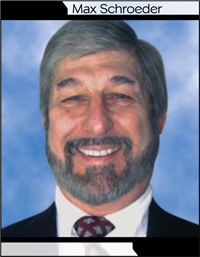|
March 2010 | Volume 13 / Number 3
Feature Story
Just the Fax: An Interview with Max SchroederBy: Paula Bernier
In preparing for TMC (News - Alert)’s recent ITEXPO East 2010 event in January, I worked with a group of industry leaders in the fax over IP space to plan a show session on the subject. Panelist Max Schroeder, senior vice president of FaxCore (News - Alert) Inc. and one of INTERNET TELEPHONY’s monthly columnists, had a lot to share about the new and interesting developments on the fax over IP scene. So for those who didn’t make it to the ITEXPO (News - Alert) session on FoIP – or for those who did, but left wanting more – here’s an in-depth discussion with Schroeder on what’s new in fax. What is the status of fax over IP acceptance in the marketplace? Schroeder: Davidson Consulting recently reported that the FoIP market increased by 70.6 percent in 2009. Certainly that number is a strong indicator of marketplace acceptance and growth. Fax has very specific criteria for transmissions to be successful. For example, you mentioned that if a fax has to traverse the session border controllers of two interconnected service providers, it can create problems. Explain. Schroeder: The primary reason fax remains a relevant communications medium is its status as a legal document in most countries. Two key fax features critical for legal status are the date and time stamp and a requirement in the T.30 protocol to confirm that all of the pages in the document have been completely transmitted. The confirmation requirement is facilitated by a handshake procedure at the end of the session between the sending and receiving devices. The PSTN was primarily designed for voice traffic and continues to be voice centric. When a call is initiated by the calling facsimile endpoint (a media gateway or similar device or an Internet-aware fax) and routed over the PSTN it can pass through many carriers to reach the receiving endpoint. Session boarder controllers manage the real-time multimedia traffic flows between the network borders of the carriers. SBCs take care of the various aspects necessary to connect two disparate networks. Since the PSTN is still voice centric, the entire infrastructure, including the SBCs, is optimized for voice, not fax. For a successful transmission, the endpoints must switch from audio mode to T.38 mode. In practice, this seemingly simple concept is actually very complex, resulting in a much higher failure rate for FoIP than traditional TDM-based fax transport. When a customer tells you they have T.38 support via a carrier or media gateway, can you feel comfortable it will work? Schroeder: Some carriers are T.38 compliant, and if the endpoints stay within the carrier’s network all is well. But the problems will re-emerge if a fax leaves the T.38-compliant network. The alternative is to deploy FoIP internally and connect to the PSTN using a media gateway such as [those offered by] Dialogic or Cisco (News - Alert). Integrating fax into the UC equation will still result in a great ROI even with the associated PSTN phone charges. How does fax relate to what’s happening with SIP trunking? Schroeder: SIP trunking can have the same FoIP issues as listed above. However, two or more carriers that are T.38 compliant could establish connecting SIP trunks to eliminate some of the problems of transmitting over the open PSTN. You are involved in fax over IP efforts within the SIP Forum (News - Alert). What is your role, and what is the forum trying to accomplish? Schroeder: My personal role is that of FoIP task group whip. The issues surrounding IP-based fax in general and the use of T.38 make it difficult for users to determine if T.38 can or will work reliably. The FoIP Task Group was chartered by the SIP Forum to address the problems and offer solutions. The charter of the SIP Forum FoIP task group is to investigate ongoing issues with the deployment of fax services, specifically ITU-T T.38, in SIP networks. Anyone interested in following the progress of the FoIP Task Group project should go to www.sipforum.org. The current task group problem statement is posted along with instructions on how to participate in or to join the forum. Do you envision a world in which there are IP-based fax machines at customer premises, or will it always be a legacy fax machine connected to an ATA? Schroeder: Many homes and small companies are not connected to the Internet but own legacy fax machines. Their most cost-effective solution will be ATAs. Medium to large enterprises will continue to migrate to fax servers. What’s next for fax? Schroeder: The dominate trend will be the integration of fax into UC and workflow using FoIP. Trend No. 2 will probably be carrier compliance for IP faxing. IT Today @ TMC
Headlines
Upcoming Events
MSPWorld
The World's Premier Managed Services and Cloud Computing Event Click for Dates and Locations Corporate News
|
|






